 W
WAfrican American Lives is a PBS television miniseries hosted by historian Henry Louis Gates Jr., focusing on African American genealogical research. The family histories of prominent people of African American descent are explored using traditional genealogic techniques as well as genetic analysis.
 W
WJames Pierson Beckwourth, born James Beckwith and generally known as Jim Beckwourth, was an American mountain man, fur trader, and explorer. Beckwourth was also famously known as "Bloody Arm" because of his skill as a fighter. He was mixed-race and born into slavery in Virginia. He was freed by his white father, and apprenticed to a blacksmith so that he could learn a trade.
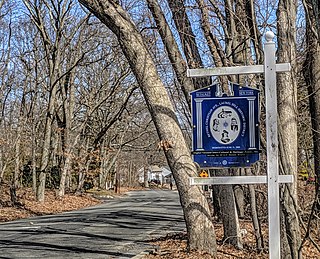 W
WBethel-Christian Avenue-Laurel Hill Historical District is a Setauket, Long Island, New York neighborhood that was nominated for preservation as an endangered historic site in 2017.
 W
WThe Black Seminoles or Afro-Seminoles are black Indians associated with the Seminole people in Florida and Oklahoma. They are mostly blood descendants of the Seminole people, free blacks and of escaped slaves who allied with Seminole groups in Spanish Florida. Many have Seminole lineage, but due to the stigma of having dark skin, they all have been categorized as slaves or freedmen.
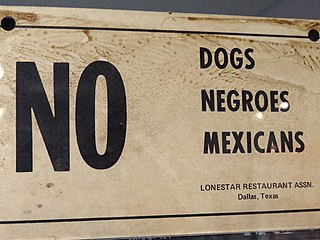 W
WBlack-Brown unity, variations include Black-Brown-Yellow unity and Black-Brown-Yellow-Red unity, is a racial-political ideology which initially developed among Black scholars, writers, and activists who pushed for global activist associations between Black people and Brown people, as well as Asian people and Indigenous peoples of the Americas to unify against white supremacy, colonialism, capitalism, and, in some cases, European conceptualizations of masculinity, which were recognized as interrelated in maintaining white racial privilege and power over people of color globally.
 W
WThe Brass Ankles of South Carolina was a "tri-racial isolate" group, as defined by anthropologists, that developed in the colonial era. They lived as free people of color successively in the areas of Goose Creek, SC and Holly Hill, SC as they increasingly migrated away from the Low Country and into the Piedmont and frontier areas, where racial discrimination was less pronounced. They were identified by this term in the later 18th, 19th, and early 20th centuries. They had a combination of European, African, and Native American ancestry.
 W
WCasta is a term which means "lineage" in Spanish and Portuguese and has historically been used as a racial and social identifier. It has been interpreted by certain historians during the 20th century to describe mixed-race individuals in Spanish America, resulting from unions of Spaniards, Amerindians, and Africans. Basic mixed-race categories that appeared in official colonial documentation were mestizo, generally offspring of a Spaniard and an indigenous person; and mulato, offspring of a Spaniard and a black African. There were a plethora of terms for mixed-race persons of indigenous and African ancestry used in 18th-century casta paintings yet they are not known to have been widely used officially or unofficially in the Spanish Empire.
 W
WChino was a term used in colonial Mexico to refer to people of mixed ancestry. In the eighteenth century, individuals of mixed Amerindian and African ancestry came to be called chinos. A Mexican Inquisition bigamy case in Mexico City labeled one woman variously as a china, loba, and parda, one example of a person shifting racial categorization. In marriage applications where individuals had to include the names of their parents, chinos tended not to know this information.
 W
WThe Garifuna people are a mixed African and indigenous people originally from the Caribbean island of Saint Vincent who speak Garifuna, an Arawakan language.
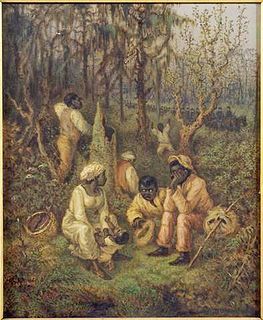 W
WThe Great Dismal Swamp maroons were people who inhabited the marshlands of the Great Dismal Swamp in Virginia and North Carolina after escaping enslavement. Although conditions were harsh, research suggests that thousands lived there between about 1700 and the 1860s. Harriett Beecher Stowe told the maroon people's story in her 1856 novel Dred: A Tale of the Great Dismal Swamp. The most significant research on the settlements began in 2002 with a project by Dan Sayers of American University.
 W
WHughes A.M.E. Chapel, also known as the Trinity Methodist Episcopal Church and the Nause-Waiwash Longhouse, is a historic building located near Cambridge in Dorchester County, Maryland, United States. It is a simple rectangular frame structure, three-bays in length, with a medium-pitched gable roof. The exterior is covered with weatherboard siding and the windows are covered with shutters. The former church building is a common example of late 19th and early 20th century religious buildings that were built in rural communities on the Eastern Shore of Maryland. It was located in the Bucktown area, which was home to bi- and tri-racial people who were descended from Native, African, and European Americans. The building has been occupied throughout its existence including ancestors of the Nause-Waiwash Band of Indians, who acquired the building in 1998. It was listed on the National Register of Historic Places in 2018.
 W
WLobo, is a racial category in the Spanish colonial racial label for a mixed-race casta, far down the racial hierarchy created by the Spanish colonial regime privileging European whites.
 W
WMelungeons is a term for numerous "tri-racial isolate" groups of people of the Southeastern United States. Historically, the Melungeons were associated with settlements in the Cumberland Gap area of central Appalachia, which includes portions of East Tennessee, Southwest Virginia, and eastern Kentucky. Tri-racial describes populations thought to be of mixed European, African and Native American ancestry. Although there is no consensus on how many such groups exist, estimates range as high as 200.
 W
WThe Miskito are an indigenous ethnic group in Central America, of whom many are mixed race. In the northern end of their territory, the people are primarily of African-Native American ancestry; others are of mixed African-Native American and English descent. Their territory extends from Cape Camarón, Honduras, to Río Grande de Matagalpa, Nicaragua, along the Mosquito Coast, in the Western Caribbean Zone. Their population is estimated at 180,000 people as of 2016.
 W
WThe Montaukett or Montauk people are an Algonquian-speaking Native American culture from the eastern end of Long Island, New York. Historically, they are related in language and ethnicity to the Pequot and Narragansett peoples who live across Long Island Sound in what is now Connecticut and Rhode Island. Relics and ruins of their settlements are visible at Theodore Roosevelt County Park, just east of the village of Montauk, New York. While descendants of this tribe still live among the neighboring tribes in the region, the Montaukett are not a New York State recognized tribe yet.
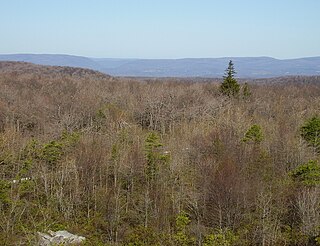 W
WNegro Mountain is a long ridge of the Allegheny Mountains, stretching 30-mile (48 km) from Deep Creek Lake in Maryland, north to the Casselman River in Pennsylvania, United States. The summit, Mount Davis, is the highest point in Pennsylvania. Negro Mountain is flanked by Laurel Hill to the west and Allegheny Mountain to the east.
 W
WThe Piscataway Indian Nation, also called Piscatawa, is a state-recognized tribe in Maryland that is descended from the historic Piscataway people. At the time of European encounter, the Piscataway was one of the most populous and powerful Native polities of the Chesapeake Bay region, with a territory on the north side of the Potomac River. By the early seventeenth century, the Piscataway had come to exercise hegemony over other Algonquian-speaking Native American groups on the north bank of the river. The Piscataway nation declined dramatically before the nineteenth century, under the influence of colonization, infectious disease, and intertribal and colonial warfare.
 W
WThe Piscataway or Piscatawa, also referred to as the Piscataway Indian Nation, are Native Americans. They spoke Algonquian Piscataway, a dialect of Nanticoke. One of their neighboring tribes, with whom they merged after a massive decline of population following two centuries of interactions with European settlers, called them Conoy.
 W
WThe Ridgetop Shawnee Tribe of Indians, known as the Ridgetop Shawnee since 2013, descend from southeastern Kentucky's early multiracial settlers of 1790-1870. Their ancestors migrated to the central Appalachian region in the late 18th to mid 19th centuries, with origins likely in colonial Virginia, similar to other migrants on the frontier. The Ridgetop Shawnee Tribe of Indians were recognized by name for their civic contributions by a resolution of the Kentucky General Assembly.
 W
WThe Seminole Nation of Oklahoma is a federally recognized Native American tribe based in the U.S. state of Oklahoma. It is the largest of the three federally recognized Seminole governments, which include the Seminole Tribe of Florida and the Miccosukee Tribe of Indians of Florida. Its members are descendants of the 3,000 Seminoles who were forcibly removed from Florida to Indian Territory, along with 800 Black Seminoles, after the Second Seminole War. The Seminole Nation of Oklahoma is headquartered in Wewoka within Seminole County, Oklahoma. Of 18,800 enrolled tribal members, 13,533 live within the state of Oklahoma. The tribe began to revive its government in 1936 under the Indian Reorganization Act. While its reservation was originally larger, today the tribal jurisdictional area covers Seminole County, Oklahoma, within which it has a variety of properties.
 W
WThe Shinnecock Indian Nation is a federally recognized tribe of historically Algonquian-speaking Native Americans based at the eastern end of Long Island, New York. This tribe is headquartered in Suffolk County, on the southeastern shore. Since the mid-19th century, the tribe's landbase is the Shinnecock Reservation within the geographic boundaries of the Town of Southampton. Their name roughly translates into English as "people of the stony shore".
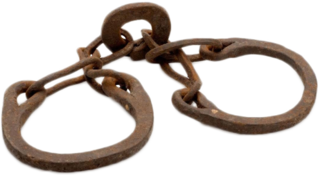 W
WAfricans were enslaved by Native Americans from the colonial period until the United States' Civil War. The interactions between Native American and Africans in the antebellum United States is complex, given that slavery played a significant role in the creation and construction of America. Maintaining institutions of slavery for profit relied largely on Africans and Native Americans enslaved by white American settlers both before and after the United States gained independence via the American Revolutionary War.
 W
WSlavery among Native Americans in the United States includes slavery by and slavery of Native Americans roughly within what is currently the United States of America.
 W
WWe-Sorts is a name for a group of Native Americans in Maryland who are from the Piscataway tribe. It is regarded as derogatory and a pejorative by some, and rarely used by the current younger generation. The Piscataway were powerful at the time of European encounter. Many individuals with the surnames Proctor, Newman, Wright, Savoy, Queen, Butler, Thompson, Swann, Gray, and Harley claim that Native heritage. Many are notably of a mixed race between black, white and Native American. "Some members of the Piscataway Indian groups now consider the name Wesort derogatory." Historian Frank Sweet lists "Wesorts" as among a group of "derogatory epithets given by mainstream society, not self-labels". However, "Wesort" is listed as a self-identified "Other race" on the 2000 United States Census.
 W
WZambo and cafuzo are racial terms historically used in the Spanish and Portuguese empires referring to people of mixed Indian and African ancestry. Occasionally in the 21st century, the term is used in the Americas to refer to persons who are of mixed African and Amerindian ancestry. Historically, the racial cross between enslaved Africans and Amerindians was referred to as a zambayga, then zambo, then sambo.
 W
W